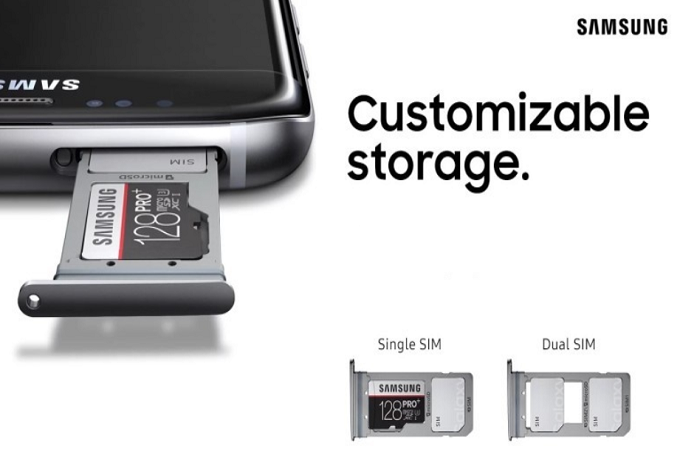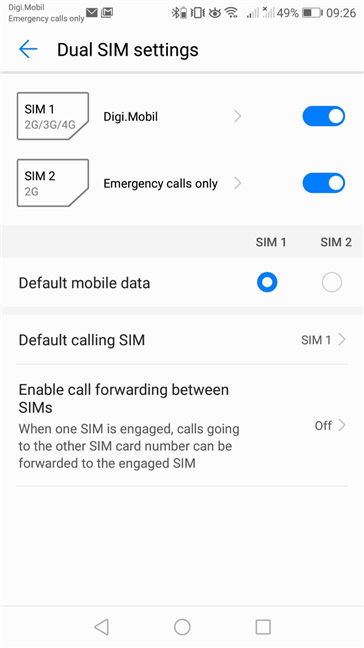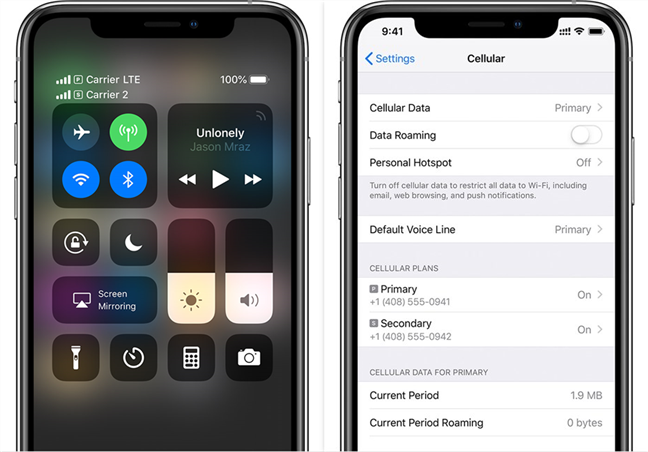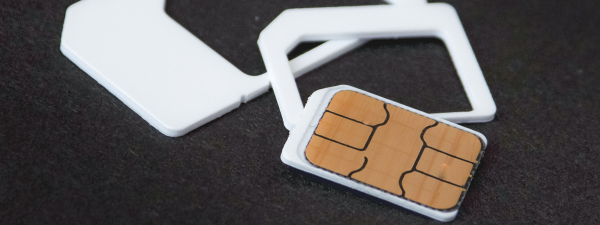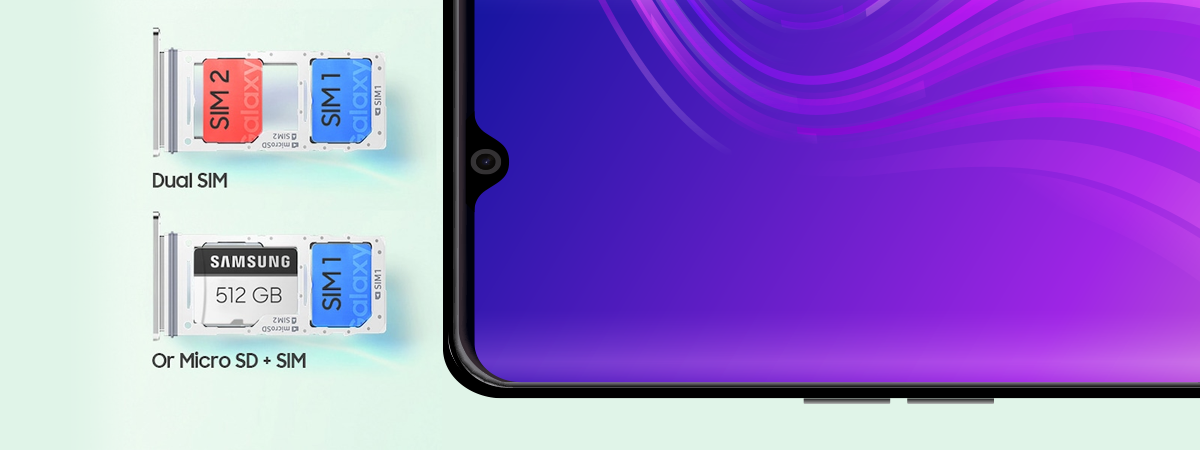
Have you encountered Dual SIM smartphones in shops? Do you want to know what makes them useful and how the Dual SIM technology works? Maybe you already know that, but you still have questions like what makes Dual SIM Dual Standby different from Dual SIM Dual Active? If you want to know what the Dual SIM technology is, how it is implemented in modern day smartphones, its advantages and disadvantages, read this article:
What is Dual SIM?
Any mobile phone or smartphone requires a SIM (Subscriber Identification Module) card to connect to the mobile network. A smartphone or phone that can hold two different SIM cards at the same time is called a Dual SIM device. Having two SIM cards means that a Dual SIM smartphone can use either of the two SIMS to initiate or to receive phone calls.
In other words, Dual SIM is a feature of some smartphones that allows them to hold and use two different SIM cards, simultaneously.
Why are Dual SIM smartphones useful? The advantages of Dual SIM!
For some people, having a Dual SIM smartphone can be useful. Take, for instance, businessmen and women who tend to have one phone number for their work and another number for their friends and family. A business person can either use two different smartphones, one for work and one for personal use, or use a Dual SIM smartphone, with both phone numbers active on it. Having one smartphone to carry around is more comfortable than carrying two smartphones.
Another situation in which you might be interested in a Dual SIM smartphone, especially if you live in an emergent market, is when you want to use one phone number for phone calls, and the other for connecting to the internet. Some mobile operators have good voice plans, but pricey data plans, or the other way around. On a Dual SIM smartphone, you can combine two different plans from two different operators and get a cheaper bill at the end of the month.
Another benefit is that you can use two mobile providers simultaneously if your phone is not locked into a specific network, which means that you can get more mobile coverage. If you travel a lot abroad, you can use one SIM card in your home country and the other SIM slot for cards you purchase in the countries you travel to, for better or cheaper coverage.
If your Android smartphone is Dual SIM and you want to learn how to configure it, follow the steps shown in this guide: How to set a Dual SIM smartphone with Android (default SIM for calls, SMS, data, etc).
How does Dual SIM work? What types of Dual SIM modes are there?
If you decide to purchase a Dual SIM smartphone, you should know that there are several types of Dual SIM implementations that work differently, and some are better than others. These are the types of Dual SIM implementations available:
- Dual SIM Single Standby (Passive) - this is the worst implementation of the Dual SIM technology, and affordable phones commonly use it. A Dual SIM Passive phone is capable of using two different SIM cards, but only one of them can be active at any time. That means that when one SIM card works, the other is unreachable. To use the second SIM card, you need to activate it manually, and the first SIM deactivates when you do that. You do not find this implementation in smartphones, just older mobile phones.
- Dual SIM Dual Active - this implementation allows you to make phone calls from both of the SIM cards inside your smartphone. It can also receive calls on either of the two SIM cards, at the same time. Dual SIM Dual Active smartphones have both their SIM cards permanently active and, when you are having a conversation on one of them, the other still works and receives calls, messages or data. For instance, if you have a call on the first SIM and you are getting another call on the second SIM, you are notified about it. The disadvantage of Dual SIM Dual Active phones is that these devices have two radio transceivers, one for each SIM card. It means that they consume more battery than regular Single SIM smartphones and they are more expensive to manufacture, leading to a higher price. It is also the reason why it is challenging to find smartphones with this implementation.
- Dual SIM Dual Standby - it is a hybrid between Dual SIM Standby and Dual SIM Dual Active. Dual SIM Dual Standby lets your smartphone have two active SIM cards, and they both use only one radio transceiver. However, they are both active only as long as you are not using them, hence the name of Dual Standby. As long as the SIM cards are both in Standby mode, you can make and receive calls on any of them. However, once you take a call on one SIM card, the other becomes inactive until the first card is no longer actively used. That is true if one or both of the mobile networks you are connected to, use 2G for phone calls. If your mobile network(s) are 3G or 4G and do not use 2G for voice calls, this limitation does not exist. This is not ideal, but the technology is less expensive and more widespread in modern smartphones. Dual standby phones only require additional space for one more SIM card. So, the cost increase compared to the single SIM version is marginal.
To make it easier for you to understand the differences between the different kinds of Dual SIM implementations, we created this simple comparison table:
Can you use your 3G/4G data plan on both SIM cards, when using a Dual SIM smartphone?
The short answer is Yes, but it depends on the Dual SIM implementation that was chosen by the manufacturer of your smartphone. Manufacturers look at how much their smartphones cost to build and their profit margins. Making a Dual SIM smartphone with a SIM card that supports 4G data connections and the other 2G, is easy and affordable. 4G + 2G can be combined in a Dual SIM Dual Standby mode and use the same radio frequencies. However, if you want to build a Dual SIM smartphone that supports 4G connections on one of its SIM cards and 3G or even 4G on the other, that would mean that the processor on the smartphone must be powerful enough to support two high-speed data connections simultaneously and probably the costs would be rather high. Most Dual SIM smartphones on the market offer 4G + 2G data connections.
The disadvantages of Dual SIM smartphones
This technology is not perfect, and some disadvantages are worth considering:
- Dual SIM Dual Active smartphones have a shorter standby autonomy because they have two radio transceivers, instead of one.
- Dual SIM Dual Standby usually uses the microSD slot for the second SIM. Therefore, in most cases, you cannot use a microSD card to extend your storage space, if you use two SIM cards. If you need a Dual SIM smartphone, you should spend extra for a version that has more built-in storage space, so that you do not need a microSD card.
- In most cases, smartphone manufacturers use a 4G + 2G Dual SIM Dual Standby implementation, meaning that one SIM can be used only for calls and text messages, not for data connections. It limits the usefulness of Dual SIM smartphones.
Examples of Dual SIM smartphones
Because of the balance between their cost and the features they offer, most Dual SIM smartphones available on the market are Dual SIM Dual Standby smartphones. If you want to buy such a device, here is a list with some good options: Huawei P20 Pro, Huawei Mate 20 Pro, Samsung Galaxy Note 9, Samsung Galaxy S8, LG G6, OnePlus 6T, Xiaomi Mi 8, Asus Zenfone 5Z, Nokia 6.1 and Motorola Moto G5.
What about Dual SIM on iPhones?
Apple has traditionally rejected the idea of Dual SIM on its iPhones. However, the iPhone XS, the iPhone XS Max, and the iPhone XR are the first Apple smartphones that offer such support. These three iPhone models can use a removable nano-SIM and a non-removable eSIM. The eSIM is a digital SIM card that lets you activate a mobile plan from a carrier, without having to use a physical SIM for that.
Apple uses a Dual SIM Dual Standby (DSDS) technology, so both the nano-SIM and the eSIM can make and receive calls. However, although the implementation lets you use two different mobile phone numbers simultaneously, it only works in some countries where carriers offer support for eSIMs. Unfortunately, the list is rather short at the moment - 24 countries, which you can see on this Apple web page: Find wireless carriers that offer eSIM service.
Do you prefer Dual SIM smartphones?
Dual SIM smartphones can be useful in some instances, and smartphone manufacturers have started to notice that people want such devices. As such, more and more Dual SIMs appear each year. However, as you have seen in this article, not all Dual SIM devices work the same, and some Dual SIM implementations are better than others. Let us know about your experience with this technology and what you think about it, in the comments below.


 22.02.2019
22.02.2019 